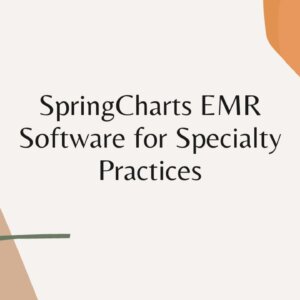Nociceptive pain is one of the two basic types of physical pain. The other is referred to as neuropathic pain. The most prevalent sort of pain is nociceptive pain. It is caused by potentially damaging stimuli recognised by nociceptors located throughout the body.
Nociceptors are a sort of receptor that exists to detect any pain that may be induced by injury to the body. Mechanical or physical injury to various sections of the body might be considered harm. The skin, muscles, bones, and other tissues, for example, could be harmed. Chemical and thermal damage can also be detected by the nociceptors. Contact with poisonous or harmful chemicals causes chemical damage. Thermal injury occurs when exposed to extremely hot or cold temperatures.
Nociceptive pain is caused by the following injuries:
Bruising, burns, fractures, and discomfort from overuse or joint injury such as arthritis or sprains
When stimulated by stimuli, nociceptors send electrical signals to the brain via the peripheral and central nervous systems, informing it of the injury (CNS). When the brain gets the impulses, it forms an opinion about the pain.
Mechanism of Nociceptive Pain
The nociceptors in the body are responsible for detecting noxious mechanical, thermal, or chemical stimuli during the transduction phase of nociception.
Nociceptors are classified into two types: C-fibers and A-delta fibres. Unmyelinated C-fibers are associated with dull, generalised pain, whereas myelinated A-delta fibres are associated with sharp, localised pain. Voltage-gated ion channels depolarize both types of fibres in response to stimuli to achieve an action potential.
Nociceptors have a high activation threshold and require significant stimulation to generate an action potential under normal conditions. However, injury to neuronal tissue or exposure to certain substances such as bradykinin, serotonin, histamine, prostaglandins, and hydrogen ions can increase nociceptors’ sensitivity, a condition known as hyperesthesia.
Following the generation of the action potential in the nociceptors, electrical signals are transmitted to the central nervous system via the peripheral nerves. Depolarization of the presynaptic terminal is a critical step that allows electrical signals to continue into the dorsal horn.
Nociceptive pain types
Most leg, arm, and back pain is nociceptive. They are classified as radicular or somatic.
Radicular discomfort
Radicular discomfort is caused by irritation of the nerve roots. It travels down your arm or leg via a nerve that originates in your spinal cord.
Radiculopathy is one disorder that can produce radicular discomfort. Radiculopathy occurs when a nerve in the spine becomes pinched. It causes numbness, weakness, and tingling, as well as pins and needles sensations.
Physical discomfort
Somatic pain occurs when any of your tissues’ pain receptors, such as muscles, bone, or skin, are engaged. Movement frequently causes this type of pain. It is typically localised. Both headaches and wounds are examples of somatic pain.
Pain in the abdomen
When internal organs, such as involuntary muscles in the heart, are wounded or inflamed, visceral discomfort occurs. Aching is a common description for this type of discomfort. The location may appear hazy. Here’s more on somatic versus visceral discomfort and when you should consult a doctor.
Management of Nociceptive pain
Analgesic medications such as paracetamol, ibuprofen, and aspirin are commonly used to treat both somatic and visceral nociceptive pain. They can be effectively managed with standard pain relief techniques, but, unlike neuropathic pain, they do not respond well to neurostimulation.
Treatment for nociceptive pain
The severity of the injury determines how this sort of pain is treated. In the event of mild injuries, the pain usually subsides as the injury heals. But, if your pain persists, you should consult your doctor. They will analyse your injury and Pain o Soma 350mg is best treatment for pain management.
Your pain management is determined by your symptoms and the source of your pain. Your doctors will evaluate:
How severe your pain is, how long it lasts, and which structures are involved in creating the discomfort
A nerve root worsened by a bulging or ruptured disc is an example of less complex nociceptive pain. This causes discomfort to radiate down your leg or arm. An Pain O Soma 500mg tablets paired with physical therapy can reduce pain. If this does not work, your doctor may recommend another method.
Alternative techniques could be:
- Changes in the way your drugs are administered
- Operative methods
- Alternative therapies such as acupuncture and physical or chiropractic therapy a referral to additional medical professionals
Visit : WebCeria






